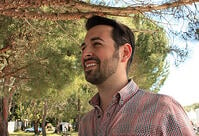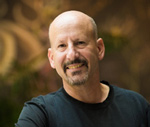Moz, a leading industry provider of search engine and social optimization software based in Seattle, Washington, USA won a Gold Stevie® Award for Best Web Writing/Content in the website awards categories of The 2013 American Business Awards, America's premier business awards program. (The entry deadline for The 2014 American Business Awards is March 26. Get your entry kit here.) We looked at the refreshingly honest way Rand Fisher, the self-styled 'Wizard of Moz', announced a leadership transition at his company on his Stevie® Award-winning blog in December 2013.
————————————–
 Why am I posting this? Mostly, because I’d hate for the news to leak out some other way and have it make people on our team feel uncomfortable or put upon.
Why am I posting this? Mostly, because I’d hate for the news to leak out some other way and have it make people on our team feel uncomfortable or put upon.
2013 was a really hard year for me. What made it so hard was partly attributable to the less-than-what-I’d-hoped-for results the business achieved, brought about by our artificially constrained acquisition funnel from June to October, between our re-brand (from SEOmoz to Moz) and the launch of Moz Analytics; but a greater portion was due to the challenges of scale.
Being a CEO at a 10-person startup, a 30-person startup, or even up to 75 people at Moz was a truly enjoyable experience. But the growth from 75 to around135 by 2013 was less fun for me. I’m still learning a tremendous amount, but I was being challenged to such a degree on issues like organizational development, HR, conflict resolution, process building, and morale that I felt out of my depth, and poorly suited—especially from an emotional-resiliency perspective—to meeting my obligations.
When these feelings started getting stronger, I talked with Sarah Bird about potentially taking over the CEO role one day, in order to let me focus more on my strengths and passions. At a Moz board meeting we had a more serious conversation on that topic, and last December, in an impromptu Allhands session at the Mozplex, we talked about it with the company as well.
Swapping Drivers on this Long Road Trip Together
Sarah likes to describe the last six years at Moz as a road trip. I’ve been driving and she’s been in the passenger seat, navigating. But while I really loved having the wheel for most of the journey, we’re getting into tougher terrain, and I really feel it might be time for Sarah and I to switch positions. She’s a different kind of driver and I’m a different kind of navigator, but we—the vehicle, and the passengers—will all be fine.
There’s a lot of nuance and complexity around a potential new CEO, but neither nuance nor complexity are how people interpret a leadership change. We human beings like simple stories, and this story isn’t simple. So, I’d like to share with you an email I sent to the Moz team at the time that helped to lay out where we were at:
————————————–
Hey gang,
Thanks so much for taking an hour out of what I know are very busy and important schedules. As promised, I wanted to follow up for those of you who couldn’t make the Allhands session in person—and for anyone who wants a refresher.
Quick Recap: For the last year, the board, eteam, Sarah, and I have been talking about changing my role/title and making Sarah our CEO. A lot of that stems from my personal passion around being an individual contributor more than a people manager, and in wanting to spend more time focusing on my strengths (marketing, product, evangelism, etc.) and less on my weaknesses (organizational development, financing, board/analyst management, etc.).
At the last board meeting, we chatted about potentially making that move as soon as January. There’s a board call to follow up on that topic next week. Nothing is set in stone, but given that I’ve written about this a bit in 15Five and talked about it on occasion with Mozzers, we wanted to have a more formal discussion with a chance for Q+A.
Questions that came up today and some answers to them:
A) When will this happen?
It’s still up in the air, but we’ll know more after the board call next week. Brad and I are also discussing this privately in a call on Wednesday morning.
B) What will Rand’s new role be?
My role will actually be very similar. I’ll likely be spending more time in the weeds with product design, marketing initiatives, and evangelism (blogging/speaking). I’ll continue to represent Moz externally quite a bit. But I won’t be doing much people managing, working on our finances and organizational development stuff, or the recruiting/hiring of senior staff. I’ve also promised to write a book next year on startup marketing.
I want to change my title to “individual contributor,” mostly because it reflects my belief that you don’t need to manage people in order to have influence. I love and want to promote the IC track/concept, and titles are kinda BS, so I will continue to be on the eteam and on the board of directors, representing internal shareholders like y’all.
C) Can we share this news?
NOTE FROM RAND: This was part of the original email to the team, but obviously (now that this post is published) is no longer applicable, but is preserved here for posterity.
No! Please don’t.
While we love to be transparent, this is a sensitive topic that requires a lot of input and care. It’s going to be hard to convey the transition correctly and not send the message that it is just because of a slowing growth rate this year (which isn’t the truth, though some of the emotional challenges I’m dealing with may have been accelerated). We also don’t yet have the full details on a plan, and it’s hard to capture the nuance effectively.
Sarah and I have talked about potentially having me write a blog post on this sooner rather than later to at least bring up the idea externally. We’d hate to have it leak.
D) Will Moz’s mission/vision/values change?
No. We’ve been aligned on that stuff for many years. TAGFEE is here to stay. Helping people do better marketing is here to stay. Powering the shift from interruption to inbound is here to stay.
Even when it comes to strategy, there will likely be very little difference to how we tackle initiatives. In fact, as Nicci and I were chatting today, I remarked that having the CEO title has, in my opinion, not helped me win any arguments with Sarah over the years. We’ve always needed to be on the same page or at least be comfortable with each other’s decisions to move forward—and I strongly suspect that will remain the case in the future.
What may change are some organizational elements. For example, as Sarah noted today, she’d like to have more regular company-wide town hall Q+A sessions where anyone/everyone on the team can ask questions to the eteam and expect a direct response.
E) Why does Rand want to be something other than CEO?
There are three big reasons (and lots of smaller ones):
#1 – As Moz has grown in numbers of people, I’ve often felt overwhelmed, out-of-my-depth, and emotionally challenged to handle the complexities of intra-team conflicts, morale, and organizational development issues. I want to do what I love and what I’m good at, and I believe I’ll be healthier and happier, and Moz will be better served, by me taking that role.
#2 – I don’t really want to be CEO of a public company, and someday we hope Moz can reach the metrics that would give us eligibility for a public offering. Given that, I’d eventually have wanted to step aside and let someone else take the reigns. Getting to do that now, years before an IPO, is a blessing: It gives us time to get comfortable and means that external investors won’t be shaken by a leadership change.
#3 – I believe Sarah will be a fantastic CEO. She’s stepped up to every challenge that ever come her way at Moz, and I believe this one will be no different. I honestly believe she can do this job better than I can, and that means good things for all of us and for the value of our shares, too.
(Plus I love the idea of Moz positively contributing to the awful inequality of women in leadership roles at technology startup companies.)
F) Does this mean Rand will leave in the near future?
Hell no. It’s impossible to describe how much of my personal identity and ego and heart are connected to this company. You’d have to push me out kicking and screaming. I plan to be here for a long time to come.
G) Is this because Moz’s performance in 2013 wasn’t as good as past years?
No.
The tough year we’ve had has weighed more heavily on me than it probably should have, and that’s part of the reason we’ve been thinking about doing this sooner rather than waiting a little longer. (We’d originally wanted to do some more hiring so Sarah would have fewer direct reports and sorted out some other issues first, but we may bias to action on this one). Even if we’d had the best year ever, we’d probably still be discussing this for some time in 2014.
H) What kind of CEO will Sarah be?
A great one—and probably a better one than me. In all seriousness, it’s hard to say for certain, but it will likely feel very familiar. Sarah is already doing a lot of CEO-type things today. I’ll let her tackle this question more, but she did so quite eloquently today at the Town Hall, talking about where her strengths lie (much more on the people/operations/financing/scaling side vs. my product/marketing/industry strengths).
I) What if things don’t go well with Sarah at the helm?
We’ll figure out a plan. We’re certainly aware of many times in a startup’s life when a CEO transitions out or back in. I’ve gotten to talk to a number of CEOs who’ve made this transition and we’re doing all we can to prepare. To be honest, I feel very confident as Sarah’s been much more like a co-CEO these past 6 years than most people know. If she weren’t a good fit, we’d have known a long time ago.
That said, the board will talk about it, and I will most certainly be here to help in whatever way needed, including filling back in should Moz need me in that role.
————————————–
Read the full transcript of this article at Rand’s blog; and about Moz, how to improve SEO, and the company’s progress at The Moz Blog.
About Rand Fishkin:
Rand Fishkin uses the ludicrous title Wizard of Moz. He co-authored/co-founded the Art of SEO, Inbound.org, and Moz because he likes doing stuff with other people. Rand is an addict of all things related to content, search, and social on the web, from his multiple blogs to Twitter, Google+, Facebook, LinkedIn, and FourSquare. In his minuscule spare time, Rand enjoys the company of his amazing wife, whose serendipitous travel blog chronicles their journeys.
About Moz
Moz provides software to track all of a website's inbound marketing efforts on one platform, conduct SEO and social media research, and provide in-depth competitive analysis over time, with custom reporting. Dedicated to helping people do better marketing, Moz also creates free tools, tutorials, and educational resources for learning inbound marketing—and fosters the web’s most vibrant online marketing community. With offices in Seattle, Washington and Portland, Oregon, Moz supports over 25,000 customers and 300,000 community members worldwide.
 Laura Ribas, the VP of Marketing at Klein Steel Services, Inc., has been appointed Chair of The 2015 American Business Awards Final Judging Committee for the Website Awards categories. We asked her for her thoughts on what winning a Stevie® Award has meant to her, what she is looking forward to in judging the 2015 Website Awards, and more.
Laura Ribas, the VP of Marketing at Klein Steel Services, Inc., has been appointed Chair of The 2015 American Business Awards Final Judging Committee for the Website Awards categories. We asked her for her thoughts on what winning a Stevie® Award has meant to her, what she is looking forward to in judging the 2015 Website Awards, and more.
 Zendesk’s mission is to help organizations deliver better service and get closer to their customers with help from the Zendesk customer service platform. As part of this mission, Zendesk publishes content ranging from blog posts to webinars to detailed articles—all with the ultimate goal of helping companies and professionals pick up information, tips, and best practices to help their organizations become more successful.
Zendesk’s mission is to help organizations deliver better service and get closer to their customers with help from the Zendesk customer service platform. As part of this mission, Zendesk publishes content ranging from blog posts to webinars to detailed articles—all with the ultimate goal of helping companies and professionals pick up information, tips, and best practices to help their organizations become more successful. Why am I posting this? Mostly, because I’d hate for the news to leak out some other way and have it make people on our team feel uncomfortable or put upon.
Why am I posting this? Mostly, because I’d hate for the news to leak out some other way and have it make people on our team feel uncomfortable or put upon.